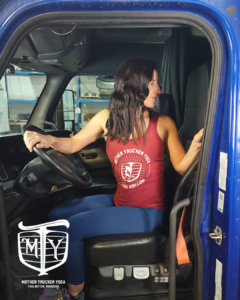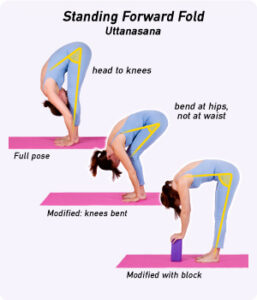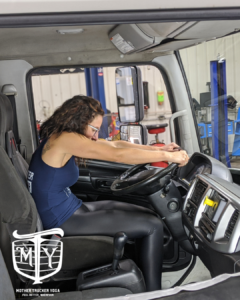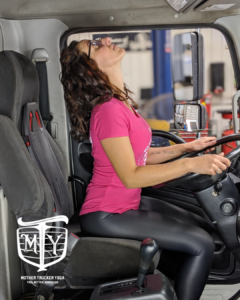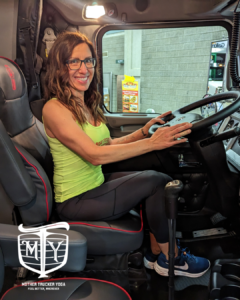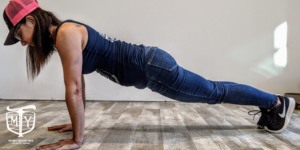Stressed Out on the Road? Here’s How Yoga Helps Truck Drivers Stay Calm
Stressed Out on the Road? Here’s How Yoga Helps Truck Drivers Stay Calm
Stress Relief for Truck Drivers
The pressure is real.
Late loads. Disconnected sleep. Backed-up docks. Isolation.
If you’re a trucker, stress isn’t just an occasional feeling — it’s a regular part of your shift.
And over time, that kind of tension doesn’t just sit in your head. It lives in your neck, your shoulders, your gut — even your driving habits. Road rage, poor digestion, and insomnia often start with one thing: stress.
That’s why stress relief for truck drivers has to be part of every wellness plan—and yoga gives you tools that fit your cab, your schedule, and your lifestyle.
🛣 Why Truckers Experience High Stress Levels
It’s not just long hours—it’s everything else truckers juggle:
- Constant pressure to be on time
- Lack of access to healthy food and regular exercise
- Poor sleep and recovery
- Emotional isolation from family and friends
- Financial strain and health concerns
According to a 2022 survey by the American Trucking Associations, over 70% of truckers report elevated stress levels, with many showing symptoms of anxiety and chronic fatigue.
🧘♀️ How Yoga Relieves Stress (Without Leaving Your Cab)
You don’t need incense or an hour-long class.
Mother Trucker Yoga teaches real moves for real people — designed for the driver’s lifestyle.
Here’s how yoga helps:
✔️ Interrupts the Stress Cycle
When you’re stressed, your body releases cortisol and adrenaline, putting you in “fight or flight.” A few slow breaths or stretches help reset your nervous system back to “rest and digest.”
✔️ Increases Oxygen to the Brain
Breathing exercises like Box Breathing (inhale 4, hold 4, exhale 4, hold 4) send more oxygen to your brain, improving focus and calming nerves.
✔️ Releases Physical Tension
Most stress lives in your shoulders, jaw, back, and hips. Stretching these areas helps your body feel lighter, less reactive, and more resilient.
✔️ Boosts Mood Naturally
Yoga helps release feel-good chemicals like serotonin and dopamine — which can combat anxiety and improve overall outlook.
💡 Try This: 5-Minute Roadside Reset
Before your next load (or after a hard day), try this:
1. Seated Shoulder Rolls (1 min)
Roll shoulders forward and back — feel the tension release.
2. Box Breathing (2 mins)
Inhale – 4 sec, hold – 4 sec, exhale – 4 sec, hold – 4 sec
Repeat 4–5 rounds.
3. Seated Spinal Twist (1 min each side)
Turn your body gently left, then right — breathe deep.
4. Repeat your calming phrase:
Like: “I’m safe, I’m calm, I’ve got this.”
Want more? Our Truck Driver Stretch DVD includes real moves for reducing stress in less than 5 minutes a day — right from your cab.
🌐 External Research
According to the Harvard Health Publishing, even 5 minutes of focused breathing and movement significantly reduces blood pressure, cortisol levels, and perceived stress.
Check it out: Harvard Health – Yoga for Anxiety and Stress
🔗 Internal Resource
If you’re feeling on edge, check out our Truck Driver Mindfulness Blog with even more tips for staying grounded when life on the road gets intense.
🌀 Final Thought
You don’t need a yoga mat or studio to feel better.
You just need a few minutes and the willingness to try.
Stress relief for truck drivers doesn’t have to be complicated. Start small. Breathe deep. Roll your shoulders. Give yourself a little space to reset — because the road isn’t going anywhere, but your sanity can.
